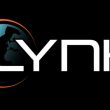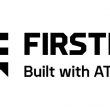Product spotlight: The death of the battery
Prof. Zhong Lin Wang believes his team of scientists has found the source of unlimited power: nanogenerators — devices that pull energy from nature and convert it into electricity.
For the past two years, Wang has worked with his colleagues at Georgia Institute of Technology’s School of Materials Science and Engineering to develop lithium-ion alternatives. One theory calls for the conversion of energy derived from mechanical and biological functions into electricity using nanogenerators, he said.
A nanogenerator is fashioned from a zinc-oxide nanowire and a nanowire belt. It consists of two components: a semiconductor and a piezoelectric. A piezoelectric generates electricity or electric polarity in dielectric crystals when subjected to mechanical stress or an applied voltage, Wang said. For example, a mechanical force applied to a metal rod creates positive and negative charges, which then are converted into an electrical signal.
Instead of batteries, electricity for portable devices then would be derived from mechanical movement, vibration and hydraulic energy, such as blood flow. A user’s body movement — such as muscle contractions and blood pressure — would power an in vitro medical or a portable communications device, Wang said. Nanowires housed in a ruggedized shell also could be placed in a desert environment, where — theoretically, at least — animal and earth movements could be harvested and converted into electricity.
Wang said nanogenerators might be commercially available in five to eight years. “That is a very conservative estimation,” he said. “I’d say by the fifth year, we should be able to have a demonstration, according to our current progress and have a device that can generate power for practical applications.”
BATTERIES, CHARGERS AND ANALYZERS RELATED READING
IWCE 2006: Reporter’s notebook
May 2006
Mobile Radio Technology
by Glenn Bischoff
More lessons from Hurricane Katrina
August 2006
Mobile Radio Technology
by John Facella
Tall order for tiny turbines: MIT tech could replace batteries
September 2006
The Boston Herald
by Jay Fitzgerald
Toshiba to replace 340,000 Sony-made batteries
September 2006
Reuters
Batteries, chargers & analyzers vendors
AC/DC Industries ▪ Advanced Charger Technologies ▪ Advanced Wireless Telecom ▪ AdvanceTec Industries ▪ A/F CommSupply ▪ Allcan Electronic Distributors ▪ Amerizon Wireless ▪ Astron Corp. ▪ Battery Products ▪ Battery Zone ▪ Cadex Electronics ▪ COMSERV Services ▪ CPI Communications ▪ Daniels Electronics ▪ DH Marketing ▪ Duracomm ▪ Durham Communications ▪ EFJohnson ▪ Electro-Comm Distributing ▪ EPCOM ▪ General Communications ▪ Honeywell Batteries ▪ Hutton Communications ▪ iTECH ▪ Kendoo Technology ▪ NABC North American Battery ▪ National Products ▪ OSI Batteries ▪ Power Products ▪ RF Industries ▪ TDI Batteries, Div. of Tyco Electronics ▪ Telewave ▪ Telex ▪ Thales Communications ▪ Transcript International ▪ Valesco Battery Support Systems ▪ Vertex Standard ▪ W & W Manufacturing ▪ Wireless Pacific ▪ Zelesco ▪ For a listing of additional vendors, click on the MRT 2006 Resource Guide at the top of the navigation bar on www.mrtmag.com.
Fuel-cell package promises long shelf life
Jadoo Power Systems recently re-leased the XRT, a ruggedized power package run by hydrogen fuel cells.
The XRT weighs 50 lbs. and supports the energy needs of four, 45 AH batteries equaling 2200 Wh of runtime. It is powered by a proton-exchange, membrane-based (PEM) hydrogen fuel cell. This type of fuel cell offers a higher-energy density compared to most other fuel-cell systems, according to the Renewable Energy Policy Project, a D.C. policy think tank that supports renewable energy technologies.
By using PEM, Jadoo was able to develop a sustainable product that targeted applications between 20 W and upwards of 5 kW, said Jack Peterson, the company’s vice president of sales and marketing. The unit was built for situations where power does not exist or where power is unreliable. This makes it ideal for first responders and emergency-management personnel tasked with ensuring that reliable communication systems are running at an incident, Peterson said. For example, it can be used to charge batteries for portable radios and laptops, and as a battery replacement for emergency lighting and satellite phones and modems.
Cities and towns also are deploying the product. Columbia, S.C., officials chose the XRT as part of its homeland security initiatives. However, the company’s largest customer base comes from professional broadcast organizations, which use the product on the “back of their 5 o’clock news crew cameras,” he said.
Peterson said fuel cells hold their charge longer than traditional batteries, which lose their effectiveness whether in use or sitting on a storage shelf.
“Fuel cells are an on-demand, power-producing product,” he said. “So if you are not using it, you’re not losing [power].”
Environmental soundness is another benefit to the unit, which is refillable and reusable.
“You’re making electricity from oxygen and hydrogen — so there’s no pouring oil in there or left-over by-product chemicals that need to be disposed of,” he said.
The XRT includes one 100 W, N-Gen fuel-cell power unit and six N-Stor360 fuel canisters. A fully configured system costs $7999.
— Mary Rose Roberts

















